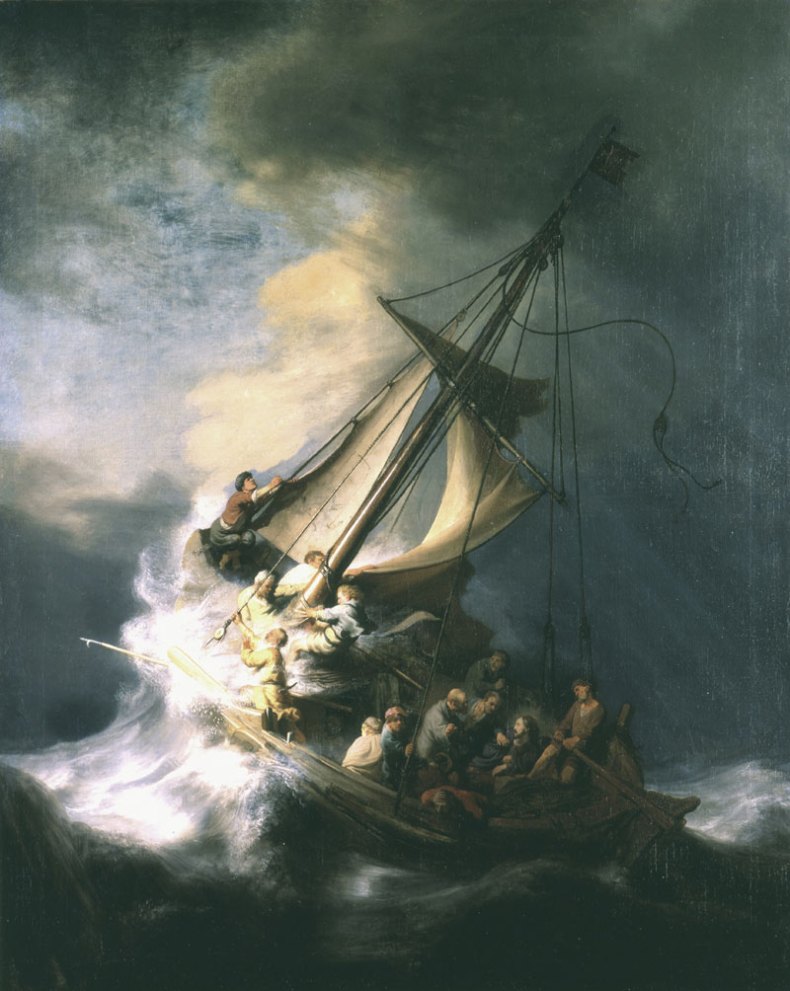This week, the FBI searched the home of elderly Boston mobster Robert Gentile for a third time, seeking clues as to the whereabouts of 13 artworks stolen from the Isabella Stewart Gardner Museum over 25 years ago. The circumstances of the original loss are so well known that they do not need repeating, but the latest news has prompted a flurry of new publicity around the ongoing investigation.
Hopes of prosecuting the thieves who broke into the museum are long gone, even though the FBI believes it has identified the perpetrators. It is clear, though, that the FBI, the local police, staff at the museum, and the public at large have not yet given up hope of recovering the 11 pictures, Chinese vase and Napoleonic finial that were taken.
The US Attorney’s Office has made clear that it will consider offering immunity from criminal prosecution if the paintings are returned, and for some time a reward of $5 million has been available for information that leads to the recovery of the stolen items. Despite this incentive, the works, valued according to the FBI at around $500 million, are still missing.
The public and media speculation surrounding the investigation of Mr Gentile’s former home, which included the excavation of his lawn, reflects this hope that the pictures can still be found. But it is time to reflect on the possibility that this might never happen – and perhaps to start questioning the resources that are being devoted to the search.

The Storm on the Sea of Galilee (1633), Rembrandt’s only known seascape
What has transpired in the case of these pictures perfectly demonstrates why, for the thieves or those now holding them, such artworks have no value. They are simply too well known, too recognisable, to be sold – and the mere possession of them will have become a millstone around someone’s neck. Who could possibly approach an auction house or dealer with Rembrandt’s Storm on the Sea of Galilee (1633) without expecting to feel the full force of the law within minutes? Indeed, who could even allow another person to catch a glimpse of the painting, when revealing its location might lead to a $5 million reward for the viewer, and a prison sentence for the holder – the length of which would doubtless reflect the scale of the search for the artworks?
Sad to say, these items are probably too well known to survive. Whatever value the original thieves thought they saw in them has been burnt away by the heat of the publicity; and instead what is left is the kind of liability that can lead FBI agents to search a home not once but three times, decades after the pictures disappeared. Any criminal sensible enough not to offer these works for sale in the hope of a quick buck, must also know that they are better off without the stolen goods. Unless they have become some sort of poisoned game of pass the parcel during which, miraculously, no one has been tempted by the reward, the works will have been disposed of long ago.

The Concert (1658–60), one of approximately 36 known works by Vermeer in the world
A useful comparison might be the works by Monet, Picasso and Freud that were stolen from Rotterdam’s Kunsthal in 2012 by a Romanian gang, and subsequently burned in an oven. The mother of a gang member was trying to destroy the evidence as the police closed in. Another example is the destruction of Stéphane Breitwieser’s haul of stolen art from museums across Europe: again, his mother destroyed hundreds of items after police arrested him. Some went in the canal, some were chopped up and thrown out with the rubbish. In both these cases it was too dangerous to keep the stolen property.
It is important to note that most stolen art is not as recognisable as the works taken on 18 March 1990, and thus is more likely to return to the market and be located. The majority of stolen art does, eventually, seem to reappear. Another positive note is that thefts of paintings as well known as those taken from the Isabella Stewart Gardner Museum appear to be decreasing. Criminals may be coming to the realisation that there is no money to be made from the theft of a picture that even they can recognise, either from a sale or a ransom. Sadly that will not change the past, and unless the FBI know a lot more than they are letting on, we must assume that these pictures will not be returning home.

Why the Isabella Stewart Gardner Museum’s stolen art may never be found
Share
This week, the FBI searched the home of elderly Boston mobster Robert Gentile for a third time, seeking clues as to the whereabouts of 13 artworks stolen from the Isabella Stewart Gardner Museum over 25 years ago. The circumstances of the original loss are so well known that they do not need repeating, but the latest news has prompted a flurry of new publicity around the ongoing investigation.
Hopes of prosecuting the thieves who broke into the museum are long gone, even though the FBI believes it has identified the perpetrators. It is clear, though, that the FBI, the local police, staff at the museum, and the public at large have not yet given up hope of recovering the 11 pictures, Chinese vase and Napoleonic finial that were taken.
The US Attorney’s Office has made clear that it will consider offering immunity from criminal prosecution if the paintings are returned, and for some time a reward of $5 million has been available for information that leads to the recovery of the stolen items. Despite this incentive, the works, valued according to the FBI at around $500 million, are still missing.
The public and media speculation surrounding the investigation of Mr Gentile’s former home, which included the excavation of his lawn, reflects this hope that the pictures can still be found. But it is time to reflect on the possibility that this might never happen – and perhaps to start questioning the resources that are being devoted to the search.
The Storm on the Sea of Galilee (1633), Rembrandt’s only known seascape
What has transpired in the case of these pictures perfectly demonstrates why, for the thieves or those now holding them, such artworks have no value. They are simply too well known, too recognisable, to be sold – and the mere possession of them will have become a millstone around someone’s neck. Who could possibly approach an auction house or dealer with Rembrandt’s Storm on the Sea of Galilee (1633) without expecting to feel the full force of the law within minutes? Indeed, who could even allow another person to catch a glimpse of the painting, when revealing its location might lead to a $5 million reward for the viewer, and a prison sentence for the holder – the length of which would doubtless reflect the scale of the search for the artworks?
Sad to say, these items are probably too well known to survive. Whatever value the original thieves thought they saw in them has been burnt away by the heat of the publicity; and instead what is left is the kind of liability that can lead FBI agents to search a home not once but three times, decades after the pictures disappeared. Any criminal sensible enough not to offer these works for sale in the hope of a quick buck, must also know that they are better off without the stolen goods. Unless they have become some sort of poisoned game of pass the parcel during which, miraculously, no one has been tempted by the reward, the works will have been disposed of long ago.
The Concert (1658–60), one of approximately 36 known works by Vermeer in the world
A useful comparison might be the works by Monet, Picasso and Freud that were stolen from Rotterdam’s Kunsthal in 2012 by a Romanian gang, and subsequently burned in an oven. The mother of a gang member was trying to destroy the evidence as the police closed in. Another example is the destruction of Stéphane Breitwieser’s haul of stolen art from museums across Europe: again, his mother destroyed hundreds of items after police arrested him. Some went in the canal, some were chopped up and thrown out with the rubbish. In both these cases it was too dangerous to keep the stolen property.
It is important to note that most stolen art is not as recognisable as the works taken on 18 March 1990, and thus is more likely to return to the market and be located. The majority of stolen art does, eventually, seem to reappear. Another positive note is that thefts of paintings as well known as those taken from the Isabella Stewart Gardner Museum appear to be decreasing. Criminals may be coming to the realisation that there is no money to be made from the theft of a picture that even they can recognise, either from a sale or a ransom. Sadly that will not change the past, and unless the FBI know a lot more than they are letting on, we must assume that these pictures will not be returning home.
Unlimited access from just $16 every 3 months
Subscribe to get unlimited and exclusive access to the top art stories, interviews and exhibition reviews.
Share
Recommended for you
How Isabella Stewart Gardner shaped artistic taste in the US
The first Piero, the first Simone Martini, the first Raphael… ‘Mrs Jack’ brought them all to America
It is hard to overstate the gravity of the Castelvecchio thefts
The loss of 17 masterpieces is a disaster for the Italian museum sector
The Gardner Museum Theft 25 Years On
The FBI may know who stole them, but the location of 13 masterpieces remains a mystery